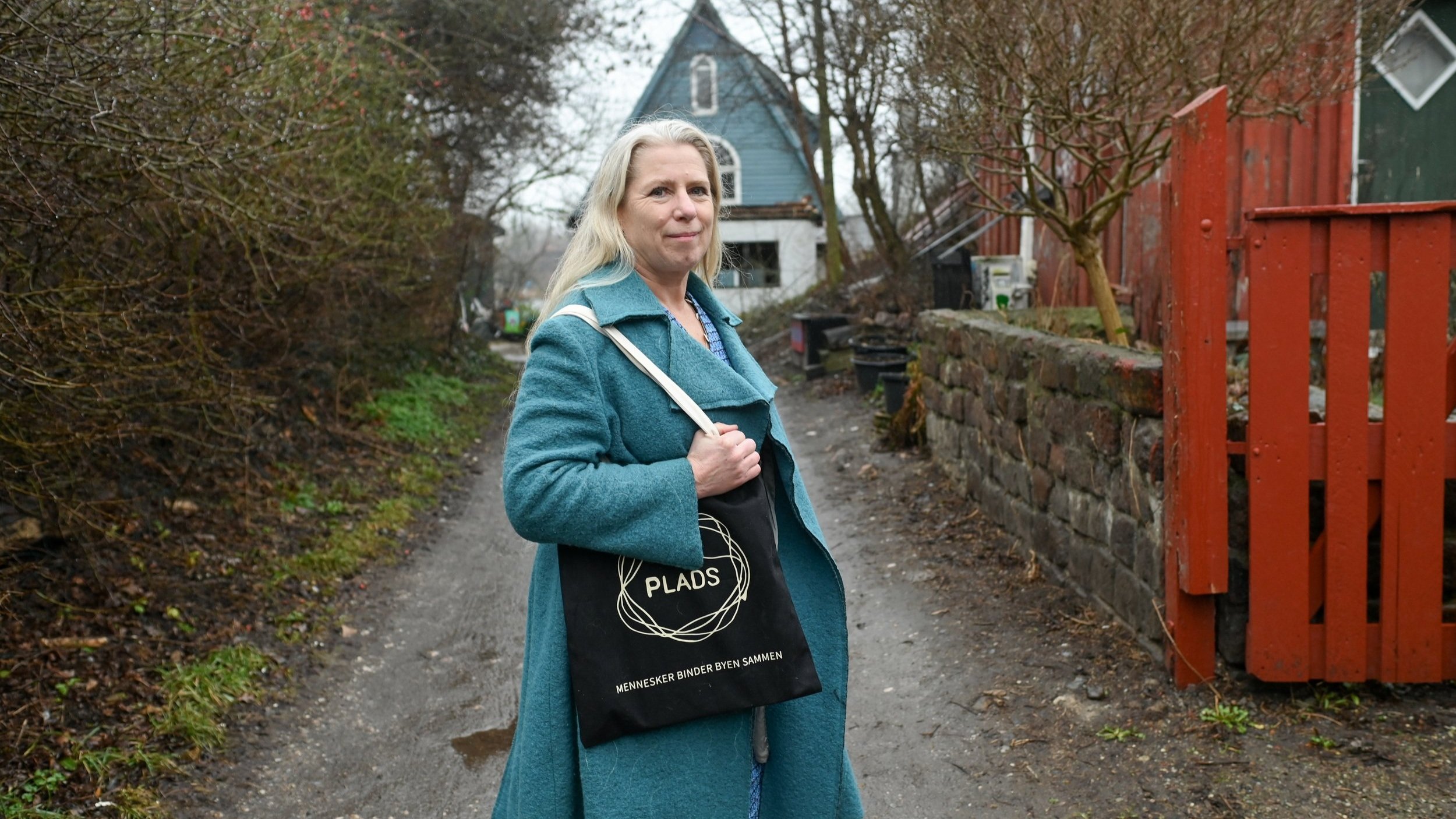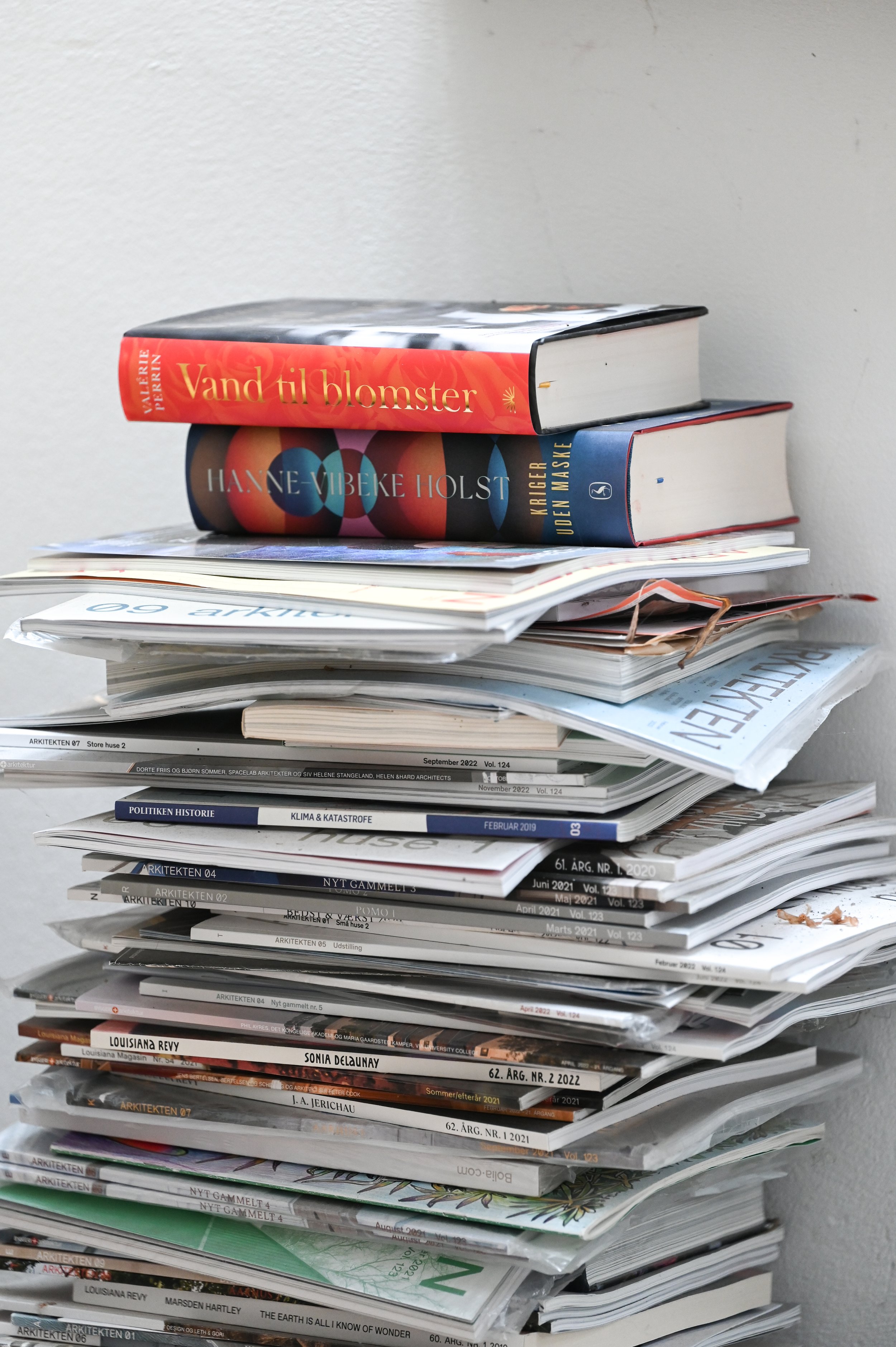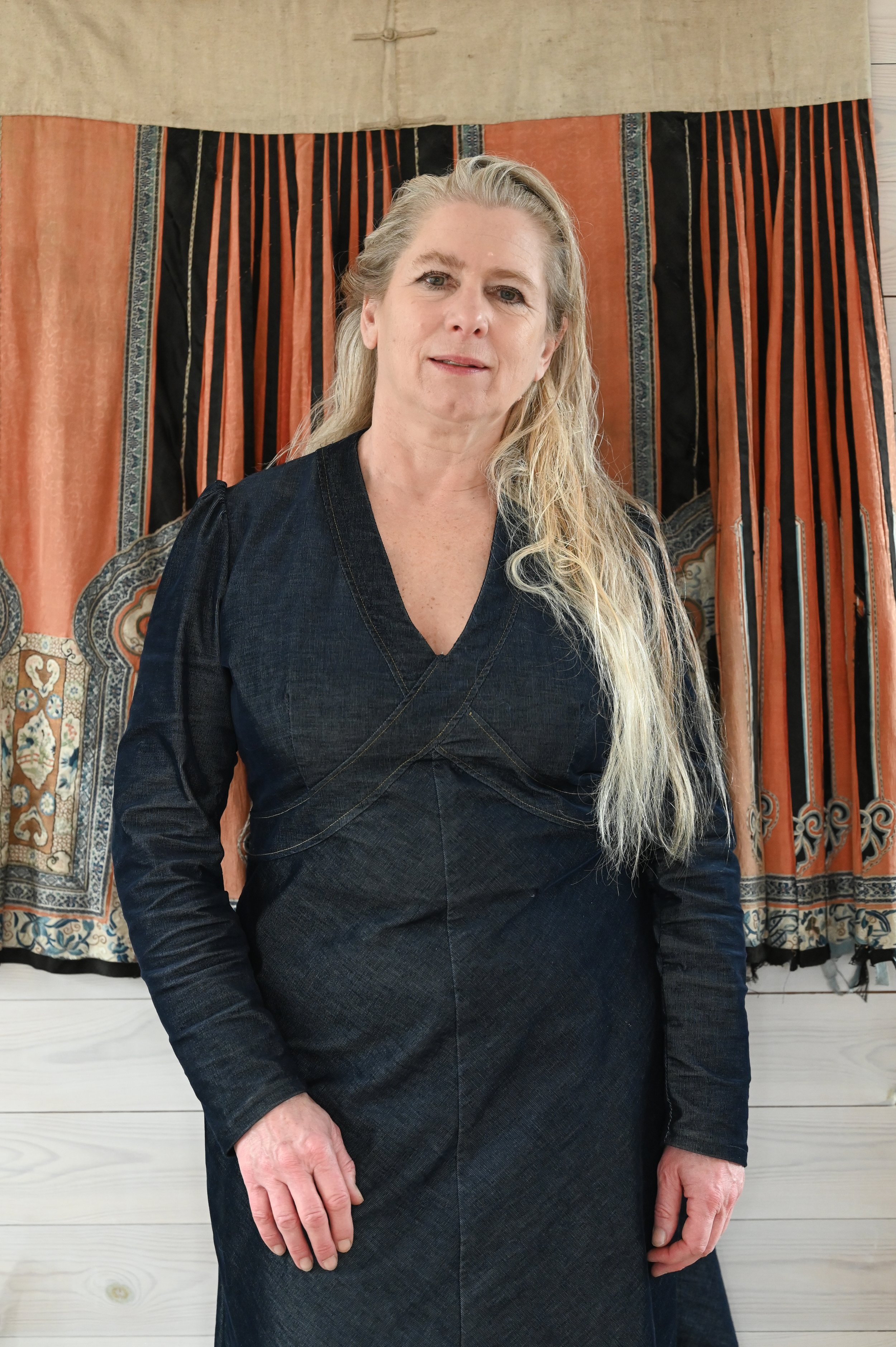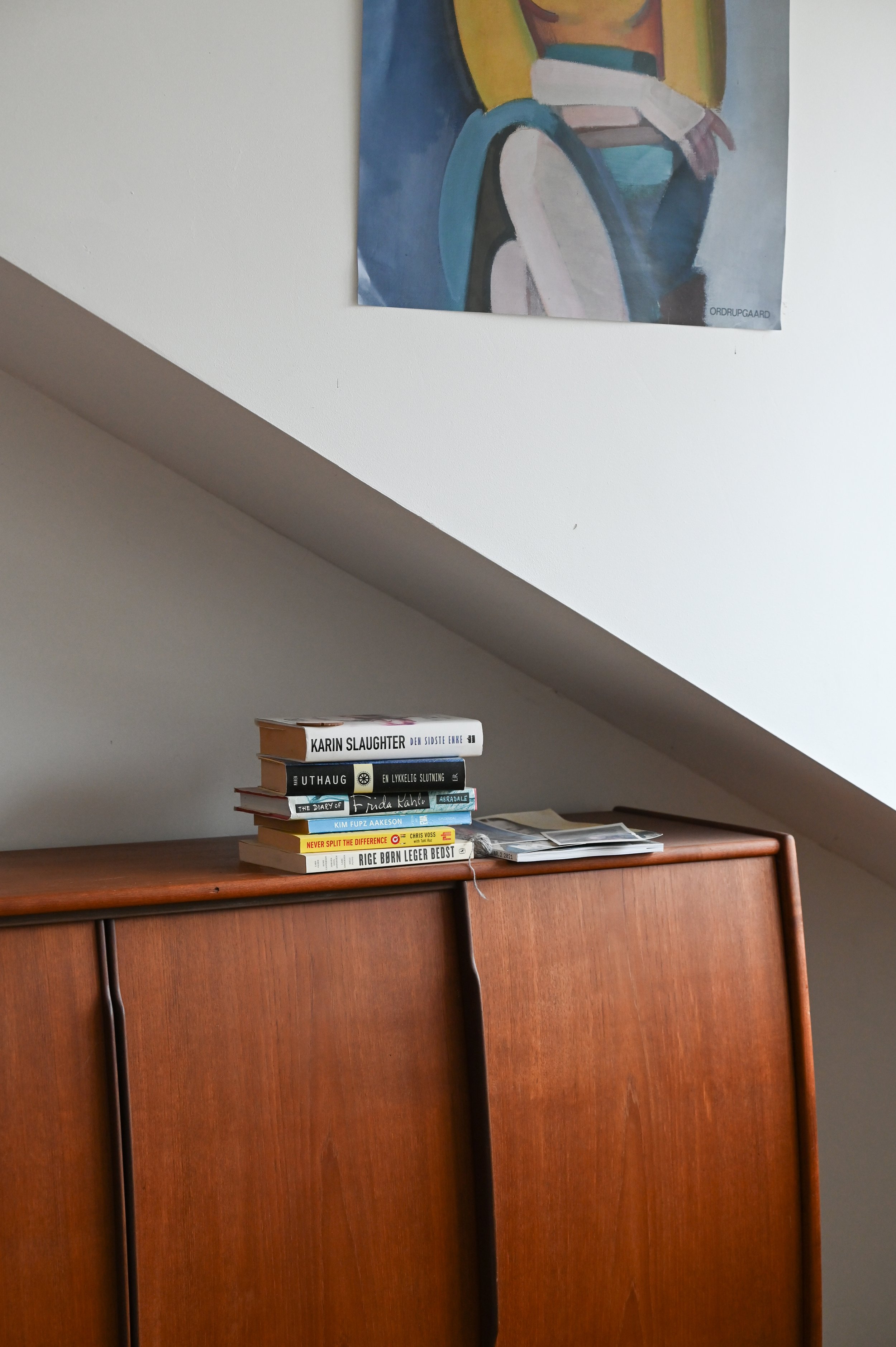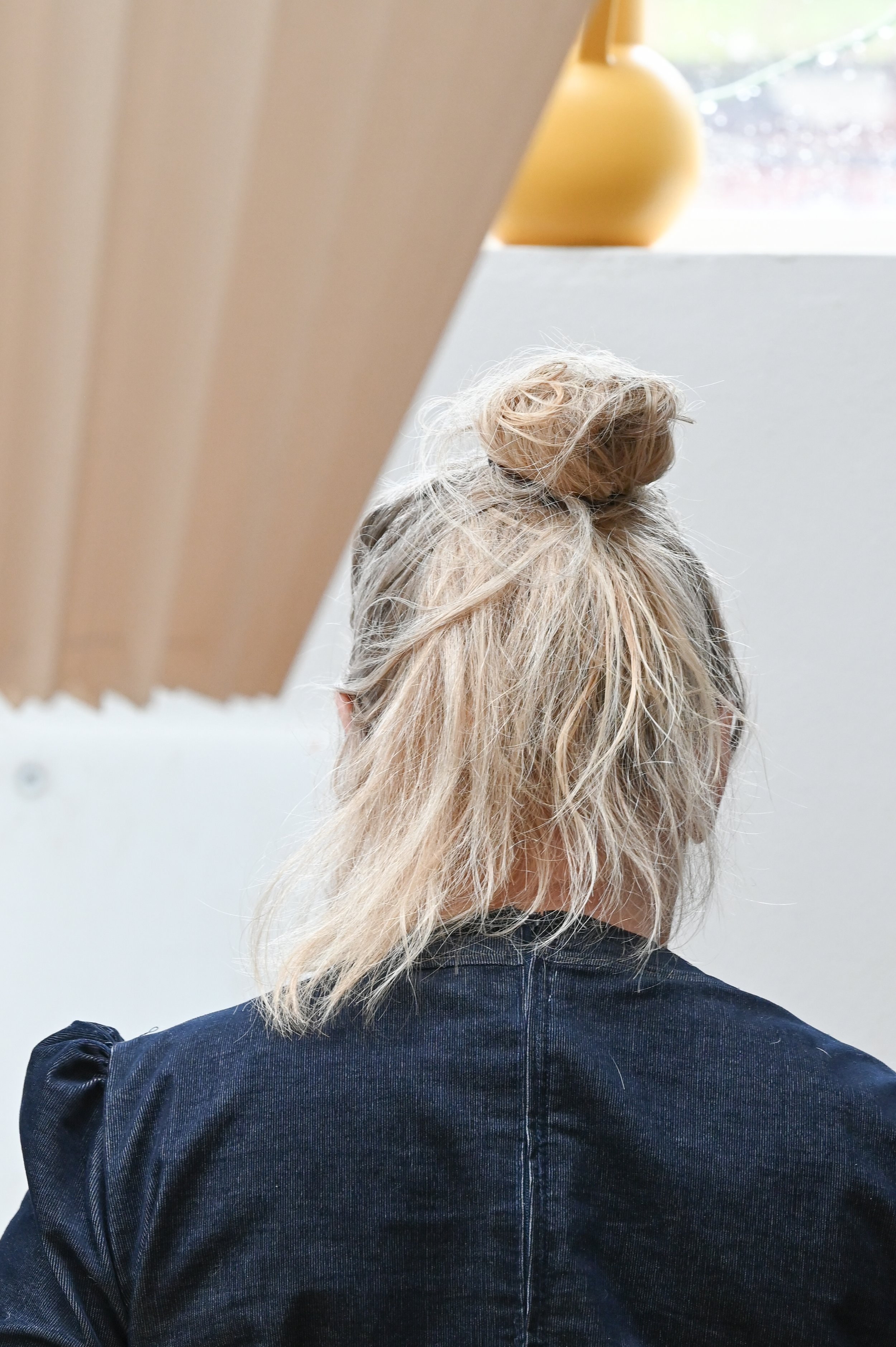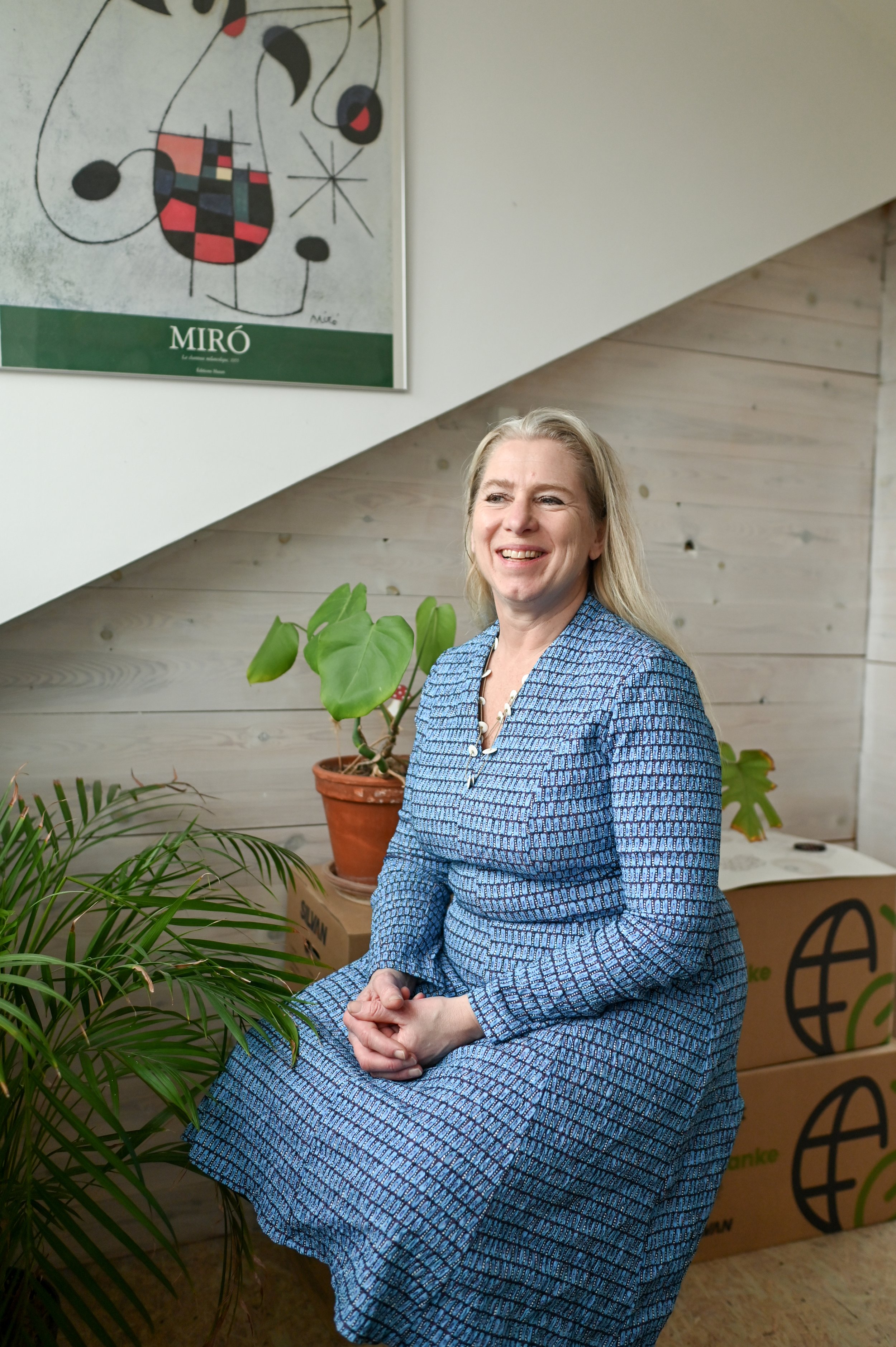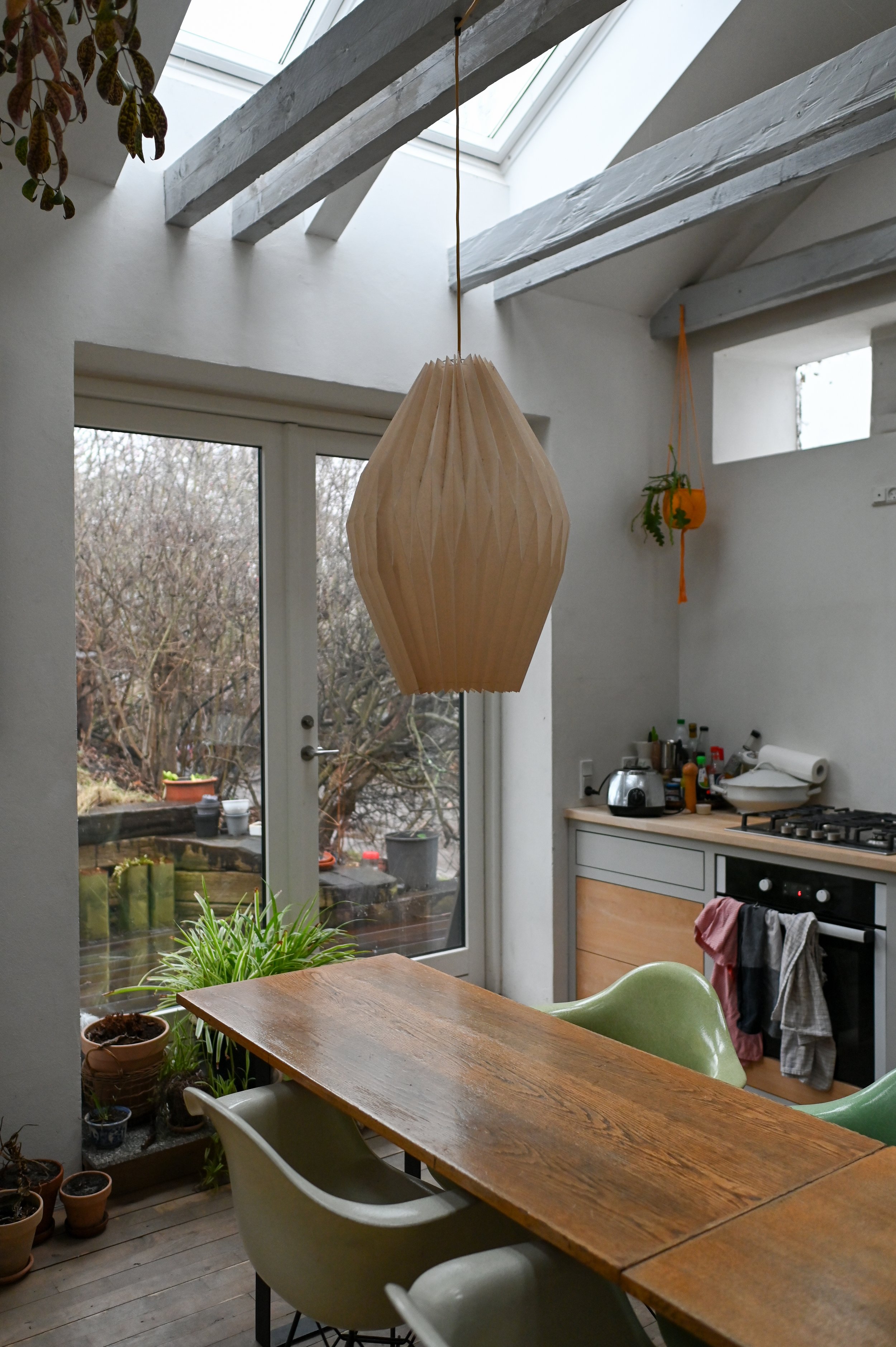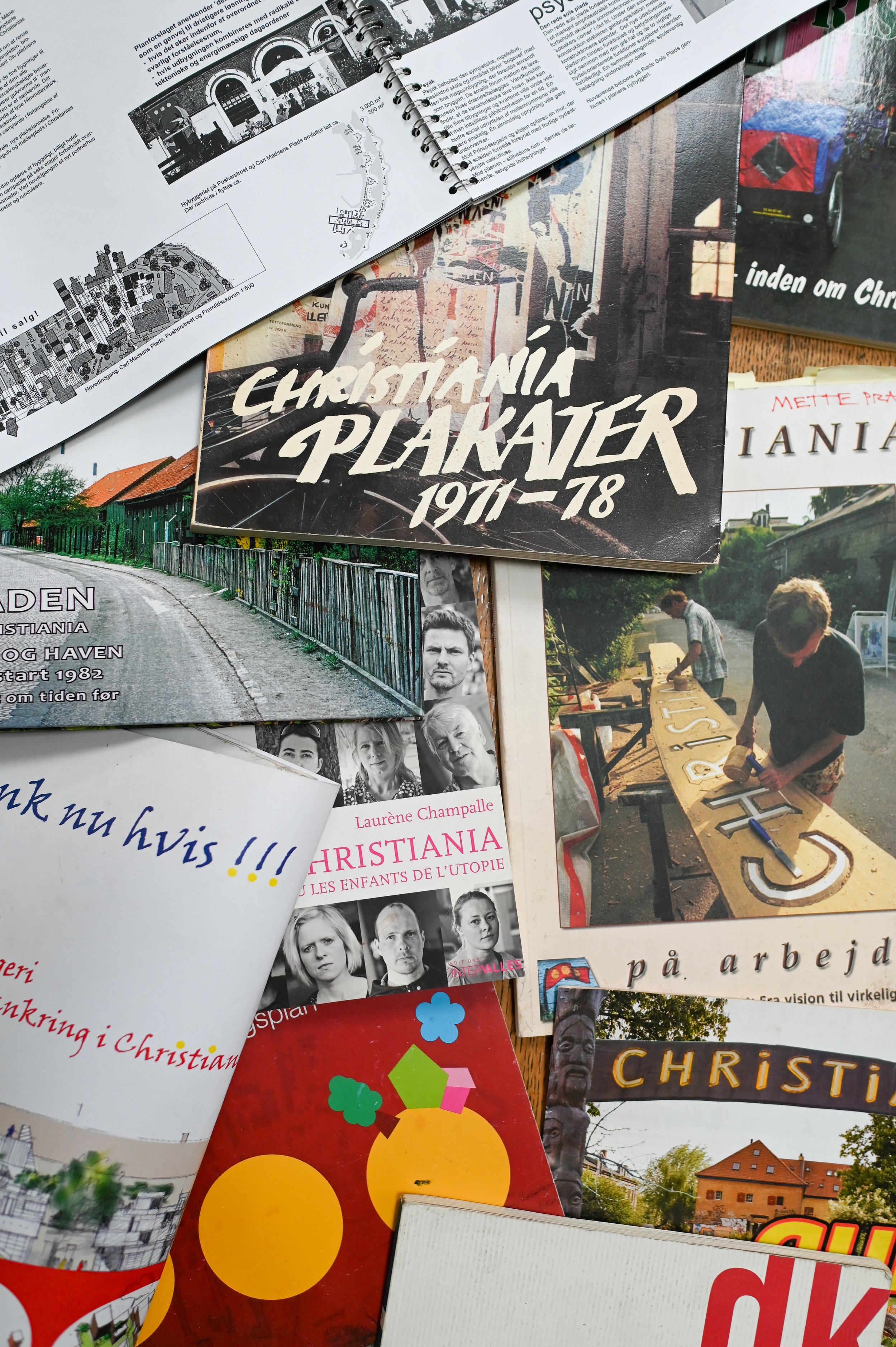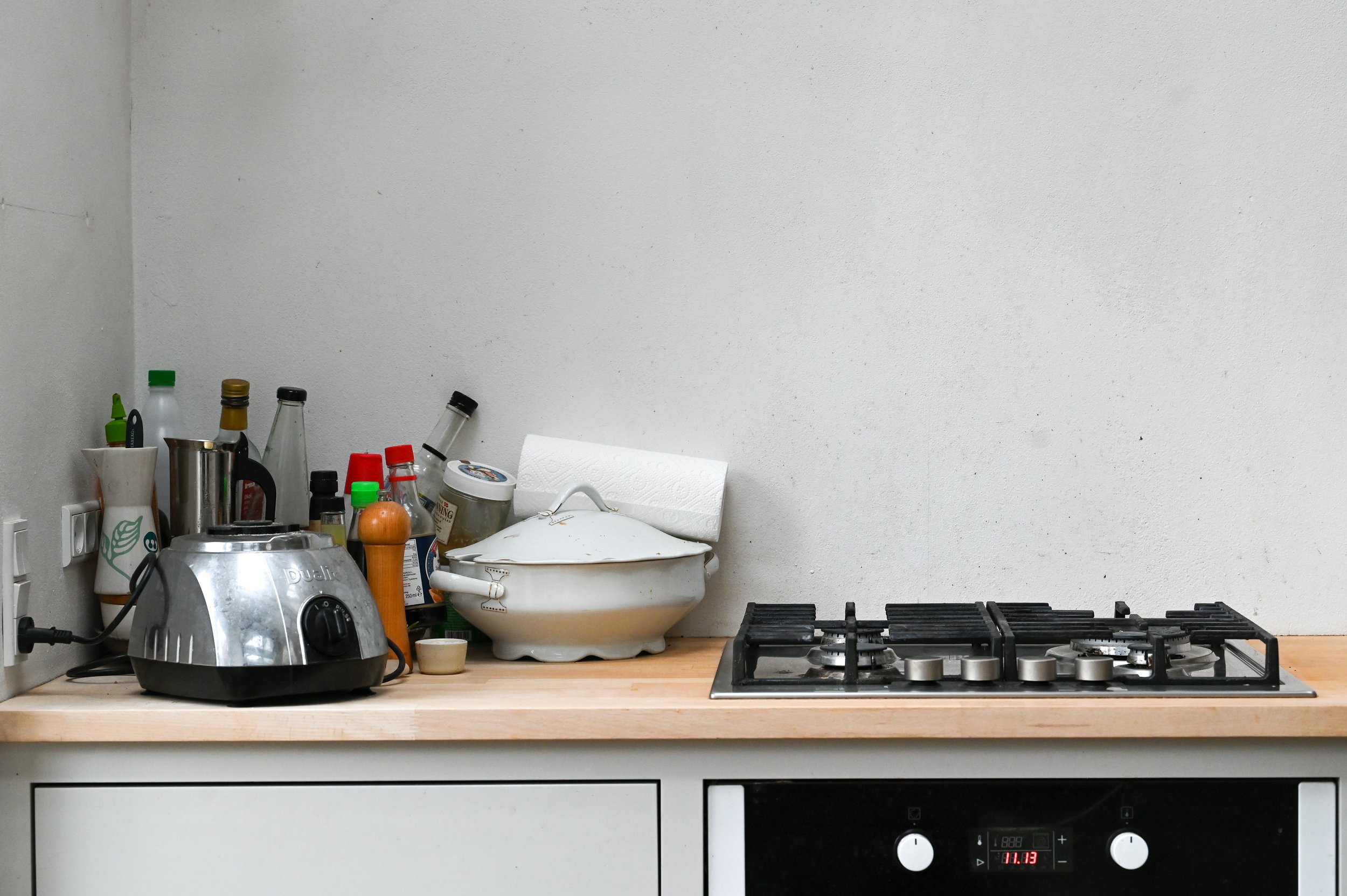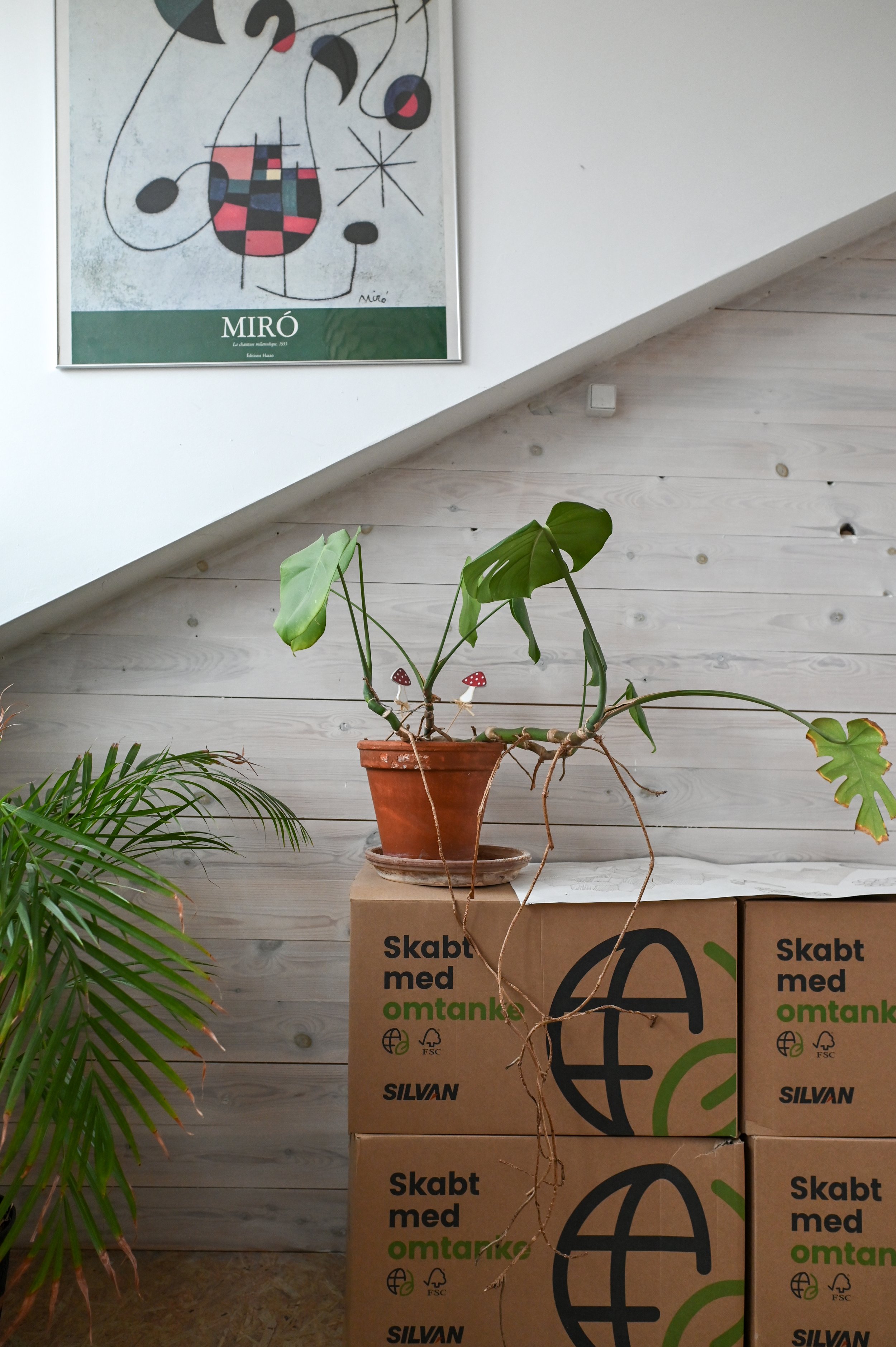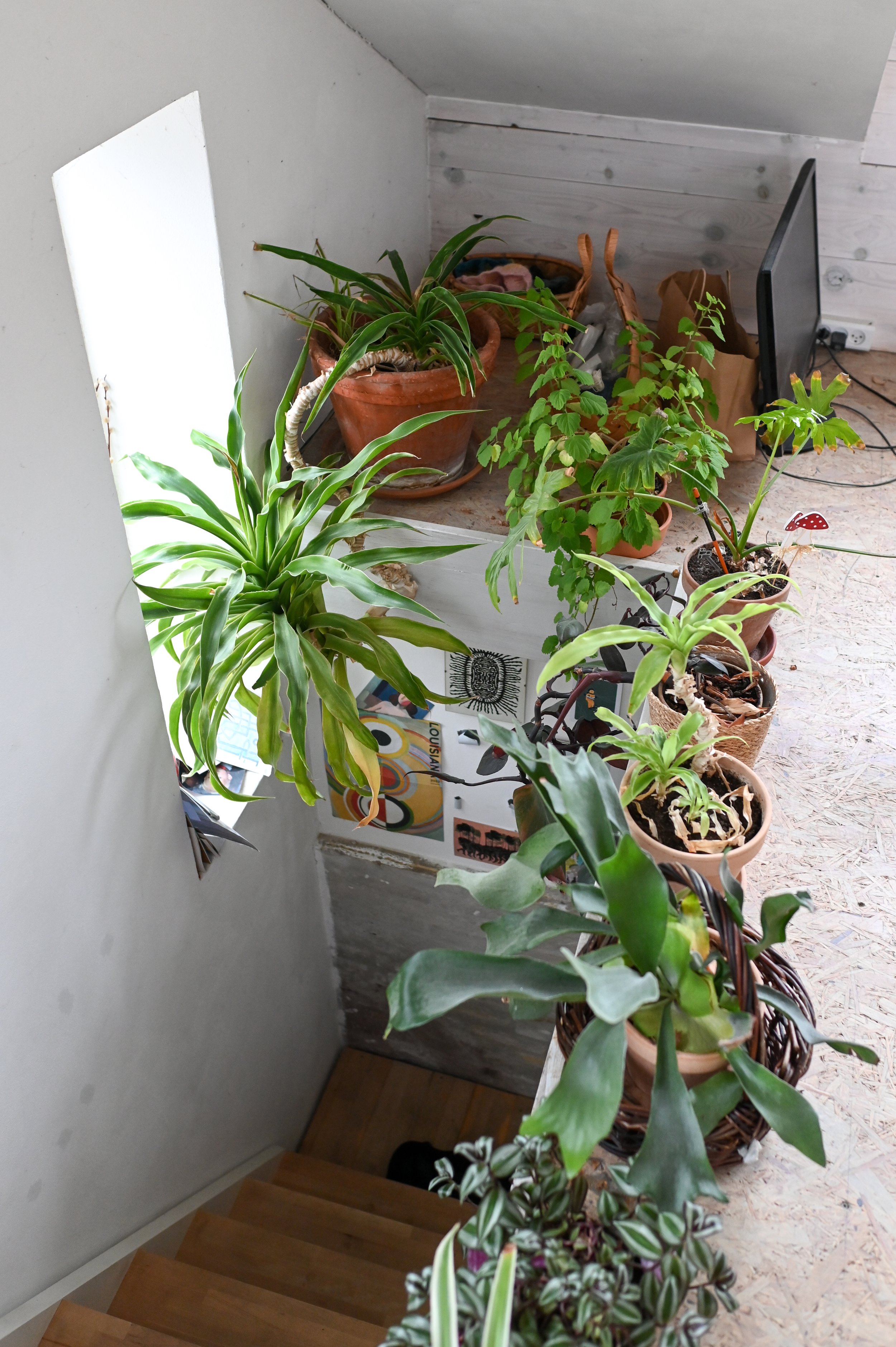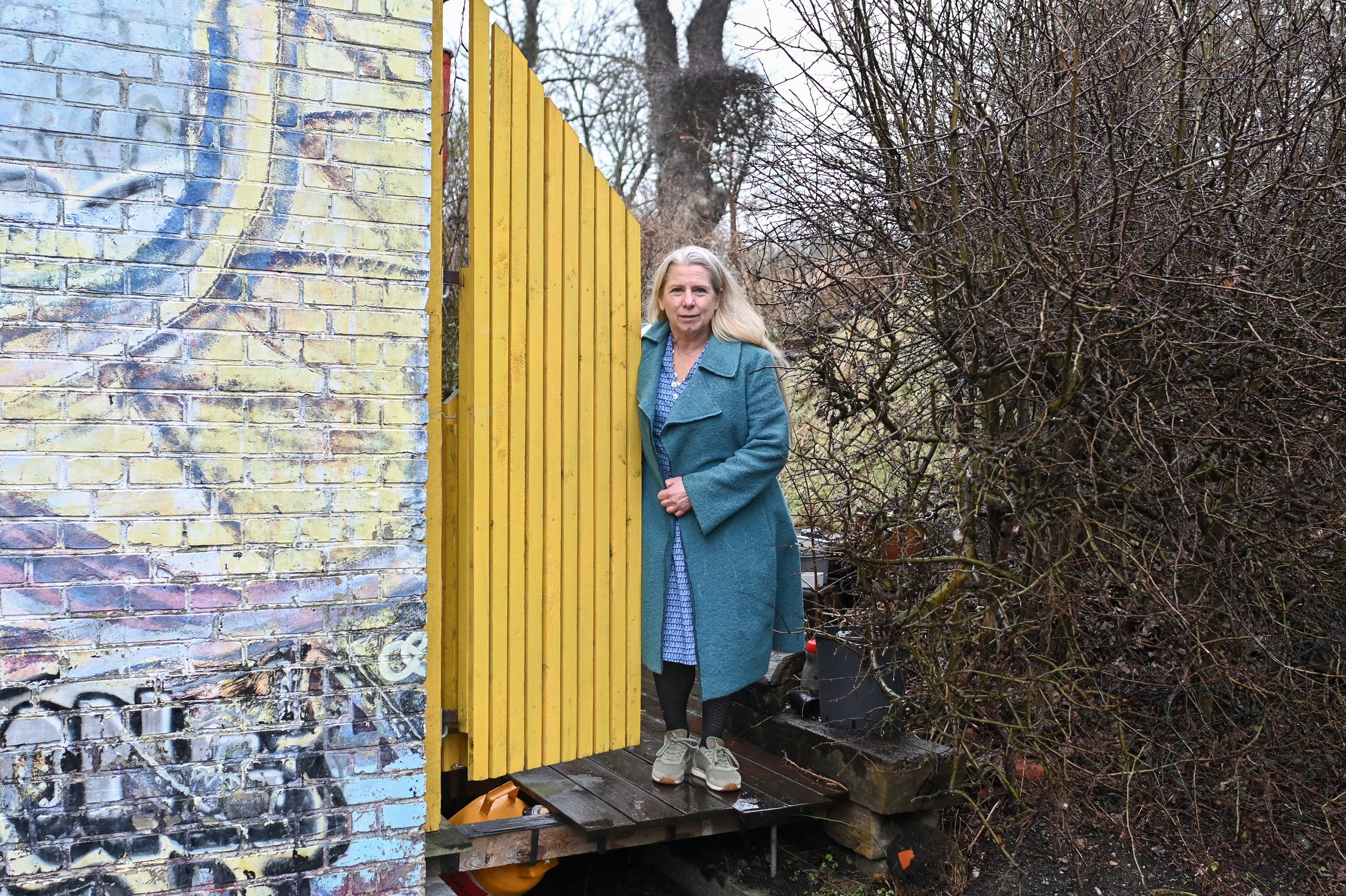Architect and urban planner Mette Prag spends most of her time in Christiania, the anarchist commune in the heart of Copenhagen where she’s lived for 37 years. When she isn’t negotiating discussions about new housing or next year’s budget, she is likely to be dancing at a nearby gathering, swimming in the winter, or teaching the next generation of urban planners at the architecture school. We spoke with Mette at the Christiania home she rebuilt herself about growing up in one commune and raising her children in another, traveling through the Sahara desert, and going vegetarian.
♫ listen to mette’s playlist | ⌨ mette’s last google search
on her morning routine
The first thing I do is to take a shower, then I listen to a podcast. It could be a half-hour podcast about cultural news or things that are going on. And then I prepare for the day. How many meetings do I have? Do I need to prepare something for this or that meeting? Is it a glasses day or is it a contact lenses day? You can see my mood based on whether I'm in glasses or have contact lenses on. Glasses, then it's a little bit of a slow day. And then contact lenses? [Claps hands] OK! I don't eat in the morning, I only have coffee. And I try to take a walk every morning to refresh my head.
on growing up in the ‘60s and ‘70s
I was born in Elsinore. It's a middle-sized Danish town 50 kilometers from here, north, near the sea, near the forest. I grew up on this commune — in the 60s, people wanted to create communities where the families living next door all ate together, and we were all going in and out of each other's houses and making things together. The adults had a lot of fun together and all the kids had a lot of fun together. It wasn't political, but it was a little political. It was the ‘60s and ‘70s: everyone was interested in society and political things and feminist movements.
on becoming an architect
My father is an architect and my mother is a nurse. When we were on holiday, we always went to churches, because my father was renovating them. I was always playing with the drawings on maps and I was curious about building techniques from the Iron Age. I was very much into all old things and I loved going to museums that focused on historical ways of living. And then I liked to draw clothes and fabrics — I was interested in design, patterns, and colors. I started quite early at the architecture school, I was only around 19 years old.
on discovering Christiania
During my studies I found Christiania. I moved here when I was 22 years old. I met a man when we were studying together at school and then we built our own house — not the house I live in now, but another house. We built everything ourselves and had a crazy idea of what it was going to look like. We were married for 30 years. I was attracted to the people and energy — this sense that we have a vision, we want to live in another way, we want to be engaged with our neighbors, we want to take care of this society, ourselves, and everything. You could do anything out here. There were no rules, except that you were to not harm anyone. The government didn't have any say out here. We were free spirits, you could say.
““The thing I was in love with when I moved in here was this idea that I could build myself a dream. And we did that.””
on community
There are 770 adults that live here and around 200 children, and then there’s a lot of workshops, shops, and cultural institutions. There are maybe about 400 people who are volunteers in the area or work here. We have several large rooms. We have a cinema. We have a concert hall. We have daycare, a nursery, and much more. Everyone pays to live here like a membership to be part of the community. And then you also pay a fee for how many square meters you have, so if you have a huge house, you pay more than if you have a small house. And then we have a very open decision structure — everyone can come to meetings and take part in the decisions; we never vote, we discuss and reach a consensus. Every year we make a new budget for the next year, decide how much everyone has to pay to live here, and we also talk about the businesses that operate here and decide how much they have to pay to Christiania.
No one owns their house. We started out fighting against private ownership. It's a political value; we didn't want to own the area. Instead, we said, as long as you are here, you're free to use it, and when you leave, you leave everything behind and you walk on. That is the main idea. Now we have a foundation that bought the land from the state, and the people in Christiania are the ones who use it. And if you want to fix a house, you're free to fix it, and then you have a nice house to live in. Or if you just want to live in a small vacant with no insulation, that’s cool, it’s up to you. It's very independent in some ways. But then we take care of each other. For instance, there’s a guy who had brain surgery, and the neighbors were looking after him and helping him. The network is quite strong here. People are involved in many different ways. Some are involved in a very small neighborhood. Some are really good at hosting a nice meeting, and creating a nice atmosphere. Some are more involved in other ways.
on raising kids in christiania
I have a daughter who is 29, a son who is 25, and another daughter who is 23. Raising them in Christiania was fantastic, because of the community here. I think my children had a very good experience and saw that there are many ways to be a family. They had a father and a mother at home, but they also saw that you can be a family with only a father, or have parents with totally different backgrounds, and so on. And you can just run around the whole area. They had a very free childhood.
““I want to teach people what I’ve learned to see about the world through my experience. So I’m also teaching at the architecture school. I want to pass these lessons on to new urban planners, so they can learn from some of the methods we have developed, like how to involve the users — the neighbors — in urban planning.””
on working in alignment with your values
After I finished my education I was working as a traditional building architect. I was working in a traditional office where we were doing traditional offices, housing, and so on, and I just couldn't reconcile what I was doing out here in Christiania and my integrity with what I was doing in my practice. So then I quit my job and I started a firm with my husband. Over time, I became more interested in doing strategic negotiations, and in how different people work together.
My interest for the last 20 years has been in how societies — people — decide things together, both here and in my practice. When working on urban spaces in Copenhagen, for instance, there are economic demands, technical demands, political demands, and so on. My role is to elevate the users’ voice in the project, to calibrate the users’ opinions to find a common solution. Because they will be the user afterward. If the users, the stakeholders, are not a part of the solution, then the solution will not work. I'm very interested in architecture as activism. I can change the world with my work. I can make a difference. So how do I do that? How should I act?
I started a firm three years ago with a colleague. She is a sociologist, and the combination of her and me is fantastic. We develop methods for our projects together.
on traveling and being curious about people
Growing up, there were a lot of things I was afraid of. I was afraid of war, with the Vietnam War and the curtain between East and West Germany. But at the same time, I've always been curious about other people, and in this way, I’m trustful. When I was young, I did a lot of traveling, because I was curious about other cultures. I hitchhiked from Denmark to Kenya. We drove through the Sahara Desert, driving for a week, seeing nothing but sand, and then we came out the other side and met people, and they were all living in these brick houses coming out of the sand. My last trip was to Iran. I've been dreaming about going there for many years, because they have this kind of architecture that's like sand coming out of the desert, and they have these marvelous, old, traditionally-cooled houses.
““Conflict is not a bad thing. It’s a way of dreaming, you could say. So don’t be afraid of a conflict. You just have to keep on asking, what is this about? For instance, Christiania is a small community, and we have the state outside. They have some things that they want to change, and we have our values, so how do those things clash? I have been in this clash for maybe 20 years, and I have tried to find solutions.””
on how christiana has changed
Of course, Christiania has changed during the 37 years I've been here, it’s not the same as it was. We have an open hash market, and it's illegal in Denmark. We used to be able to deal with that, but the situation has become so critical that we cannot deal with it anymore. Over the years there has been more and more money coming into it, and the dealers are fighting about the market. So it's not free hippies smoking a joint now, it’s a big business. But Christiana is about so much more than that, we have this whole society, run by ourselves, and we make all the decisions. We have to take care of all the gardening; if we want to have more electricity, we have to plan it, if we want to fix the sewers, we have to plan it.
At the moment we are discussing how we can build new housing — where we put it, what we want, how to incorporate regenerative building practices, and so on. The government has forced us to do it. They think that if we want them to accept the area as it is, a small community with another lifestyle, then we have to do certain things. They think that this area can have more adults living here. You could say that they want to gentrify the area, but another way to think about it is that we need to have more younger people moving in here because many community members have been here for 40 or 50 years and they are getting old and we need some young people to take care of the old ones.
So we have to decide where can we put some new housing, and then we want to find the new inhabitants before we start to draw the plans. So for instance, if there’s a site and we could build the housing, we want to put out an open call. Then maybe four people would come together and say, We want to move into Christiania. We have this idea for a small house, we want to be together and we have a plan for gardening or music or having small kids. Then we can start to develop the house, based on what they want their small neighborhood to be about, instead of the other way around.
on feeling at home
This is a different house than the one my husband and I first moved into. I got divorced. I was lucky, I found another place in Christiania quite fast. Some have to move out if they split up. This is an old house, the guy who lived here before thought he’d live here for a year or two, and then he ended up staying 25 years. But when I took over seven years ago, there was a lot to do. I really started from scratch. There was no first floor, and I also did the whole roof. All new skylights, windows, everything. I don't have visitors often. For me, my home is my private space. When I'm in here, I'm private, and when I'm outside my doors, I'm quite public. But then also I like to make food for my children or have my friends come over and talk all night. It feels like home because I had a dream and I designed it. So ownership is not important. It's the atmosphere of the home that’s important for me.
““I find myself in a period of my life where I have a lot of experience and I’m still curious and I’m still open. In some ways, I’m in the best part of my life.””
on feminist architecture
I’m very inspired by how the younger generation approaches architecture. In some ways, they are doing what I have been practicing for 20 or 30 years, but they have a different approach to it. They put theory into my practice and I say, thank you! For instance, they call it feminist architecture: you have to start with the people, the users, the process. It’s as important as the final project. Everything is not designed for the female body. Most things are designed for men — cars, roads, everything. When you become aware of it, you start to say, hey, is this what we get for a world? When I was in school, the idea was that you could make a universal design that fits everyone. If your architect had done his work well, then it would be good for everyone in the whole world. But if you talk about making urban spaces, you have to consider that we all have different dreams, different needs, different bodies and sizes. You have to be aware that minorities may have different needs. We have to be aware of our own blind spots and I think young architects are more aware of that. The new generation is also demanding climate action. They don’t want to do what I did when I just finished my education and just dropped into a huge Danish company, they want to live according to their values.
on the phases of life
I'm in a period of my life where I’m reflecting on my relationship to my childhood and my relationship to my mother and father. My mother and father are both still alive. There are things that are encoded in you very early — what is your inner life? How do you respond to every situation?
My youngest child moved away four years ago. I’ve almost only lived in this house alone, and I’ve never lived alone before. So I’m reflecting on my childhood alongside reflecting on the purpose of my life. Because now, I'm still a mother, but I'm not a mother 24 hours a day. So who am I? My daughters have given me new insights and perspective on being a woman, and I'm reflecting on my relationships with my friends. What is a family? It is my children, but I also have my friends, and sometimes that’s a family. I find it interesting, that family is more than a husband, more than a father and mother.
on refreshing the body, mind, and soul
I like to be out in nature. I like to walk and ski, or go rowing in a group. You go out together, four in a boat, and you are working together with the boat. And I do winter swimming. That’s for refreshing my brain, my body. For my soul, I like to go out dancing. There is a community for dancing here called Night Dance. It was started by people who were DJs in the late eighties. I’ve been dancing there for 10 years. The people are more or less my age, so you meet other people, and everyone comes just for dancing.
on what she’s reading
Landsbyskolens Nørrebro - Nørrebroernes håndbog; 1991 Lokalplan for Christiania; Folding Techniques for Designers: From Sheet to Form by Paul Jackson; Jeg anerkender ikke længere jeres autoritet by Glenn Bech; Flavor by Yotam Ottolenghi, Ixta Belfrage, and Tara Wigley
on going vegetarian
I started to be a vegetarian some years ago, because I’m very concerned about climate change. And then there was this fantastic book — I needed to be inspired to make other foods, and it taught me that you could make the most fantastic meal only with mushrooms.
mette’s favorite spots in Copenhagen
If you come to Copenhagen, you should, of course, visit Christiania. But it's important that you go a little beyond where all the tourists go. Walk around and also try to talk with someone. Ask what it’s like to live and work here. Visit the workshops that are here, like the Women’s Smithy. The place where I spend most of my time is at the Christiania meeting house.
I’m always going to museums. I’m very into going to the Louisiana.
In two days I will go to visit a performance group called Sisters Hope. They are doing what they call Sensuous Society. They have a performance that’s been going on for five years, 24 hours a day. So I will go in there and take part in the performance for 24 hours. It's a kind of meditation, you could say. I've been there once before.
interview and images by clémence polès, edited by meghan racklin

